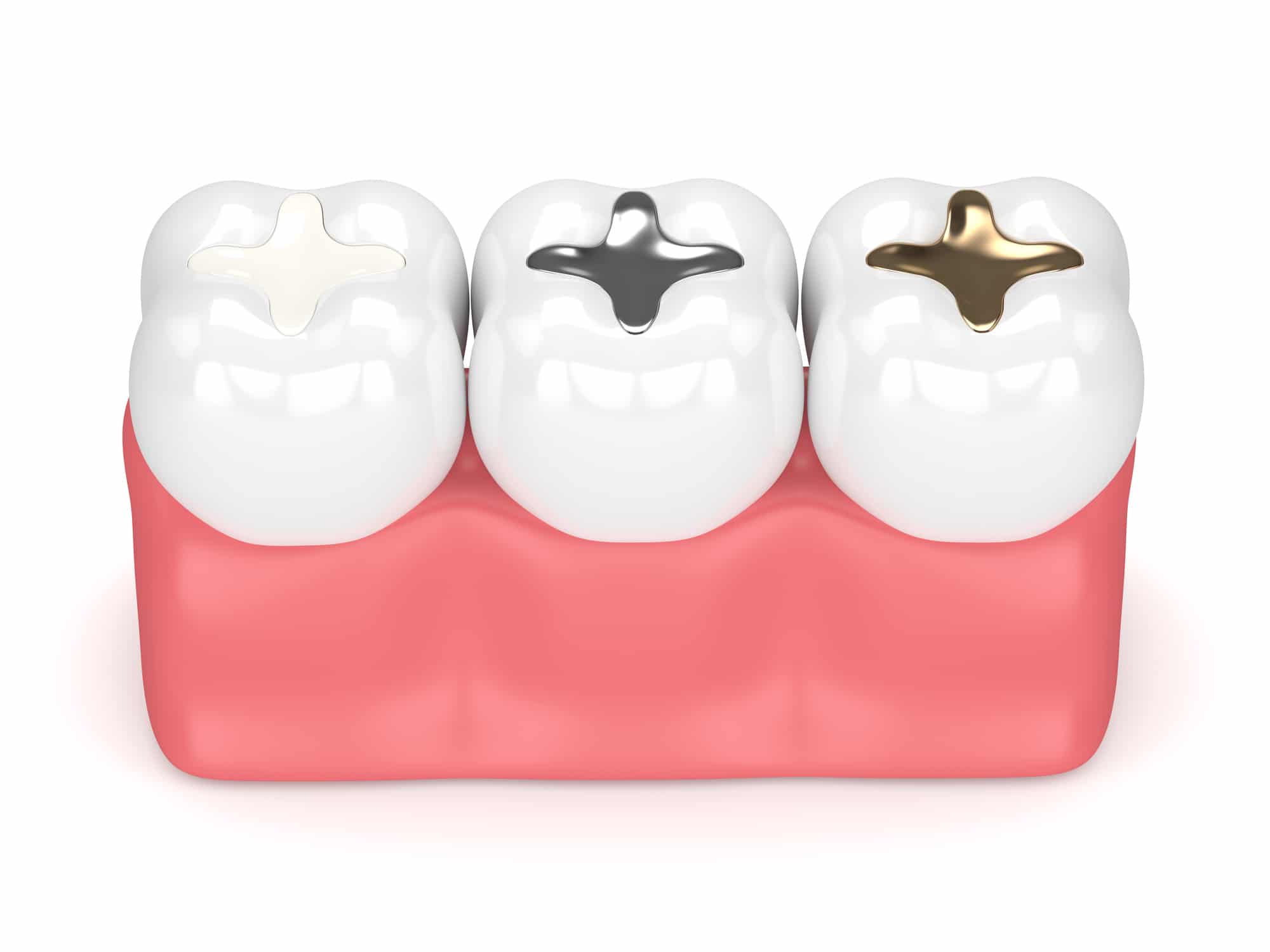What Are Composite Fillings?

Most of us are familiar with fillings. According to the CDC, approximately 91 percent of U.S. adults between the ages of 20 and 64 have at least one filling. By the time the age increases to 65, the number is 96 percent.
OK, so just about everyone has at least one filling. The vast majority of those fillings are silver amalgam, which was the filling material of choice starting in around 1850 until recently when it was replaced with composite resin.
Composite resin was first introduced for fillings in the 1960s. Also known as “tooth-colored fillings,” composite resin blends in perfectly with the surrounding natural tooth enamel. The problem with composite was that the early forms tended to break down more quickly than amalgam, so they weren’t as durable. But in the 1990s and 2000s, the resin was mixed with glass ionomer, which greatly increased the strength and durability of composite resin fillings.
Dial 505-278-5953 today to reach our office and learn more about composite fillings, or to schedule a personalized consultation with Dr. Holbrook to determine whether you are a candidate for treatment!
How Can I Make My Composite Fillings Last Longer?
Composite fillings are similar to amalgam (silver) fillings in that they are not made to last forever. The fact is, your teeth experience micro-movements on a day-to-day basis. This means that any filling that you get will very likely need replacement at some point. To help your composite fillings last as long as possible, your instructions are simply to take good care of your teeth. Brush twice a day for two minutes each time. Floss every day. Sip water throughout the day to dilute sugar and acid residue in your mouth. Finally, see your dentist every six months. During your routine dental exams, we don't just examine your teeth and gums, we also evaluate the structural integrity of all of your restorations, including your fillings.
Are White Fillings Better?
White dental fillings, or tooth-colored dental fillings, hold certain advantages in comparison to the silver fillings many adults have today. To be transparent, we must also say that silver fillings, also called amalgam fillings, also have advantages. The primary advantage of silver fillings is that they might last longer than white fillings. Conversely, white fillings aren't made only because they look better (those silver fillings eventually darken), but also because they are kinder to your teeth and body. If we were to say that white fillings are better, it would be because white dental fillings are made with biocompatible composite resin material. White fillings do not contain mercury, which means they do not carry the risks of the systemic effects of mercury. Also, because white, composite resin fillings do not contain metal, they are less likely to expand within the tooth and cause hairline fractures.
Why Choose Composite Fillings Vs. Silver Fillings?
Choosing the type of filling that is ideal for you can feel challenging, we understand. Silver fillings have been around for over a century. You may have a few from childhood. Your parents and grandparents may also have had this type of filling. The thing to consider is why. You, your parents, and your grandparents may not all have silver (amalgam) dental fillings because they are what's best. The reality of the time was that dental amalgam, which contains nickel, tin, and other substances, as well as mercury, was simply less expensive than gold. Prior to the development of "silver fillings," dentists used gold to repair tooth decay. Gold is a metal, but one that is less reactive to heat and cold. Likewise, composite fillings are less reactive to heat (when you chew) and cold (from food), so tend to expand and contract much less so than a silver filling.
Are Composite Fillings Permanent?
The lifespan of any filling may not be permanent. To some degree, it depends on when the filling is placed. Gold and silver fillings may last a few decades. This is not to say that metal fillings will absolutely cause no harm to the tooth during that time. Composite fillings are also not intended for permanent use. Your natural teeth can wear down over time. So can your fillings. A composite filling may last from five years to well beyond a decade. Your dentist will observe the integrity of your tooth-colored composite fillings at every routine dental exam. Doing so, they ensure that the margins of your filling are intact and that the tooth can continue to manage the amount of force that is exerted when you bite and chew.
Does Insurance Cover Composite Fillings?
Today, many insurance companies cover at least a part of the cost of tooth-colored fillings. We recommend contacting your insurance company directly for specific information related to your benefits.
Are Composite Fillings Safe?
Studies indicate that composite dental fillings can safely repair tooth decay and fortify damaged teeth for many years. Many patients appreciate the absence of mercury in composite dental fillings even more so than the cosmetic benefits of this type of treatment.
We're happy to answer your questions about mercury-free composition dental fillings! Contact us today to receive friendly, professional advise.
Candidates for Tooth Fillings
Dr. Holbrook uses composite resin for both new fillings and for the replacement of old silver amalgam fillings. Of course, if you come to see us for your regular twice-yearly cleaning and exam and we discover you have a tooth with decay, you won’t necessarily plan to have a new filling, but more and more we are using composite resin for these fillings.
Also, we have many patients who either want to replace old amalgam fillings for aesthetic reasons or they need to replace them as the filling or fillings are reaching their lifespan. Most people no longer like the idea of having mercury in their teeth, and they’d rather have composite resin.
There are no restrictions for whether or not a person can have composite fillings placed.
What Are The Types of Dental Fillings?
There are many types of filling materials available, each with its own advantages and disadvantages. You and Dr. Holbrook can discuss the best options for restoring your teeth. Composite fillings are the most widely used filling material today. Because composite fillings are tooth-colored, they can be closely matched to the color of existing teeth, and are more aesthetically suited for use in front teeth or the more visible areas of the teeth.

Benefits Of Tooth-Colored Fillings
The most obvious benefit is appearance. When Dr. Holbrook places a composite resin filling in a tooth, you’re going to be the only one who knows that tooth has a filling. They are basically invisible to anyone else looking at your smile. Beyond appearance, unlike amalgam fillings, composite fillings actually bond to the tooth surface, making the tooth stronger. Plus, when placing an amalgam filling, more of the healthy tooth structure needs to be removed to create room for the filling. Because composite resin bonds to the tooth, it is not necessary to remove the same amount of healthy tooth material.
Composite Filling Procedure
Composite fillings are usually placed in one appointment.
- While the tooth is numb, your dentist will remove decay as necessary. Space will then be thoroughly cleaned and carefully prepared before the new filling is placed.
- If the decay was near the nerve of the tooth, a special medication will be applied for added protection.
- The composite filling will then be precisely placed, shaped, and polished, restoring your tooth to its original shape and function.
It is normal to experience sensitivity to hot and cold when composite fillings are first placed, however, this will subside shortly after your tooth acclimates to the new filling.
How Long Does It Take to Place a Composite Filling?
These fillings take no longer than placing a silver amalgam filling. These are done in a single appointment. Usually what happens is that we find the decay during your exam and we opt to immediately remove it and place the composite resin filling. Small fillings may take as little as 20 minutes. Larger fillings, where we need to remove more decay, may take up to an hour.
How Do I Care For My Tooth-Colored Fillings?
You will be given care instructions at the conclusion of your treatment. Good oral hygiene practices, eating habits, and regular dental visits will aid in the life of your new fillings.
As with most dental restorations, composite fillings are not permanent and may someday have to be replaced. They are very durable and will last many years, giving you a long-lasting, beautiful smile.

How Long Do Composite Fillings Last?
Up until the last decade, composite resins used for fillings were not as durable as silver amalgam. That’s why many practices resisted using resin, except for small fillings on non-molars. That has changed. Thanks to various technological advances, the strength and durability of composite resin fillings are roughly equivalent to that of silver amalgam. The average lifespan for these fillings (and for amalgam) is about 12 years. This lifespan can be far longer; it depends on the patient.
Are There Any Risks With Composite Resin Fillings?
These are virtually risk-free treatments. When Dr. Holbrook places a filling, the decay has not entered the interior of the tooth, so it has not come in contact with nerves or blood vessels. That makes for virtually no chance of infection. Composite resin is safe and actually strengthens the tooth.
In contrast, placing silver amalgam fillings does involve some risk. Silver amalgam fillings involve the risks of cracking a tooth, allowing decay to form around the filling, and they require more tooth to be removed. And, of course, you are putting mercury in your mouth.
Are Dental Fillings Covered by Insurance?
Yes, because removing tooth decay and placing a filling prevents further damage to a tooth, dental insurance covers these procedures.
Do Tooth-Colored Fillings Cost More?
Because composite resin costs more than silver amalgam, tooth-colored fillings cost from 10 to 20 percent more than amalgam. Dr. Holbrook believes the minor variation in cost, however, is more than made up for by the advantages of these basically invisible, beautiful tooth restorations.
Call Dr. Holbrook Today for Composite Fillings in Albuquerque, NM!
If you are interested in composite fillings and would like to see if you are a good candidate, call 505-881-1159 to schedule a consultation at our practice in Albuquerque, NM. You can also fill out the form on this page or our contact page, and our staff will help you set up your appointment.






